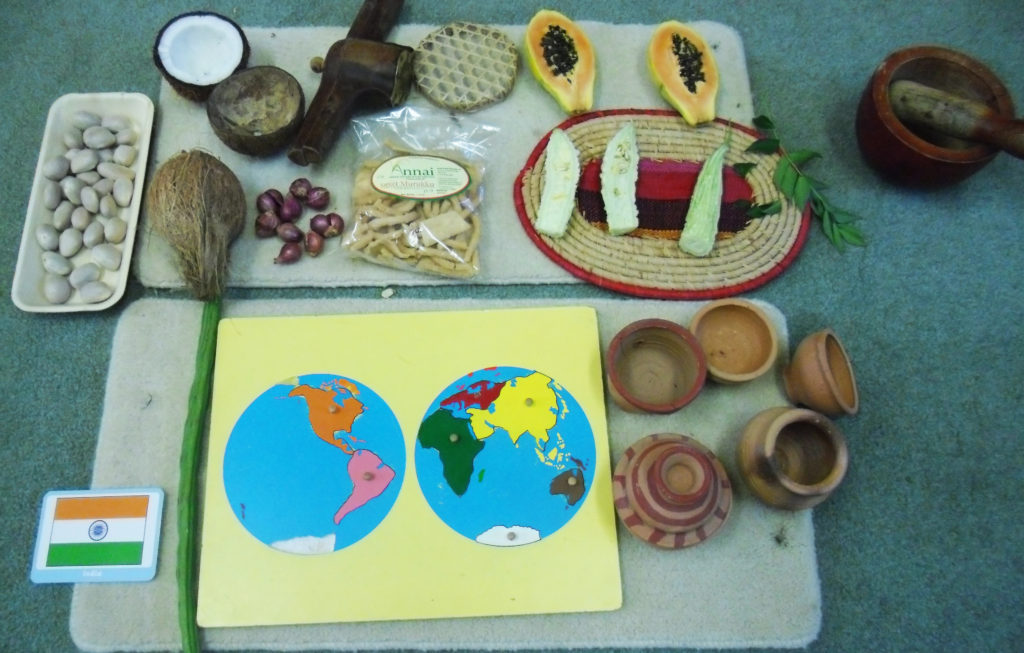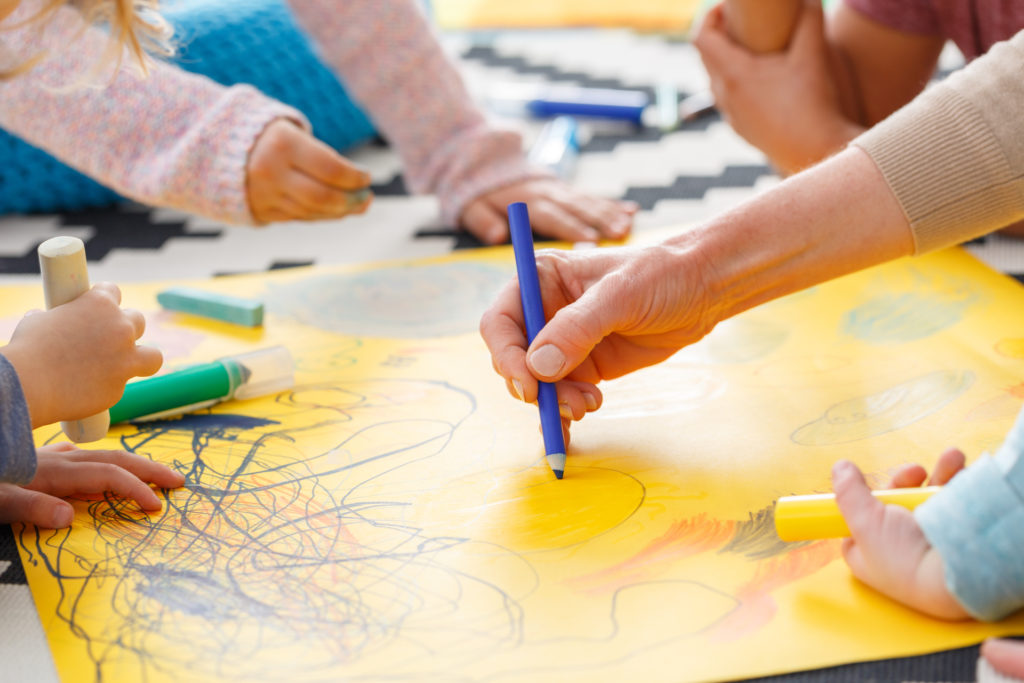Classroom Activities & Montessori Materials
At the core of the Montessori Method is a carefully structured classroom in which the children can choose amongst individual, purposeful, activities or join in group activities.
The trained Montessori teacher helps the children by showing them how activities are done, observing their work, and individually introducing new challenges when a child is ready for them.
At all times, the teacher is careful to encourage freedom of choice and expression.
Gradually the children reveal qualities for which they are not usually given credit, such as intense concentration and surprising attention span, a sense of order, self discipline and respect for others.
The environment is set up as a bridge between the home and the wider world. Montessori called this place a Casa dei Bambini or Children’s House.
In each classroom we have low level shelving so the children are able to select materials of their choice, this encourages independence. The materials have been specifically designed to use the children’s senses to learn naturally. The classrooms are all arranged in five main areas:
Practical Life Activities
These are designed to build skills in everyday activities which the child may be familiar at home.
Practical life activities promote independence, co-ordination, fine and gross motor skills. These also prepare the child for later mathematical and language work, whilst developing the child’s concentration span.
Examples: threading, polishing, dressing frames (buttons, zips, poppers), pouring, spooning, sorting, dusting, sweeping up, carrying a chair.
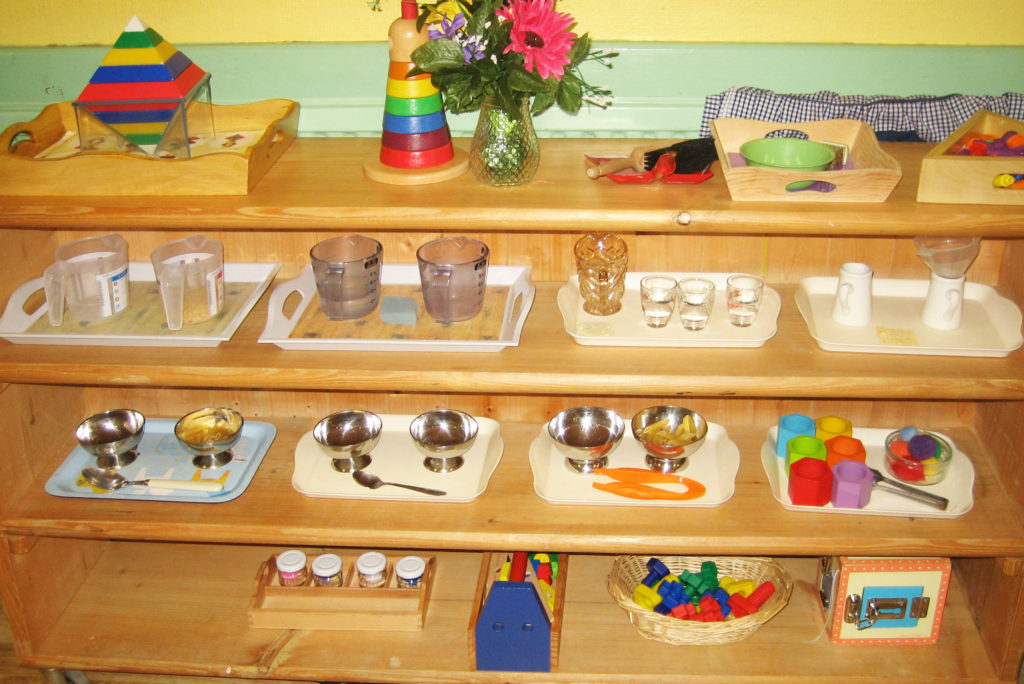
Sensorial Activities
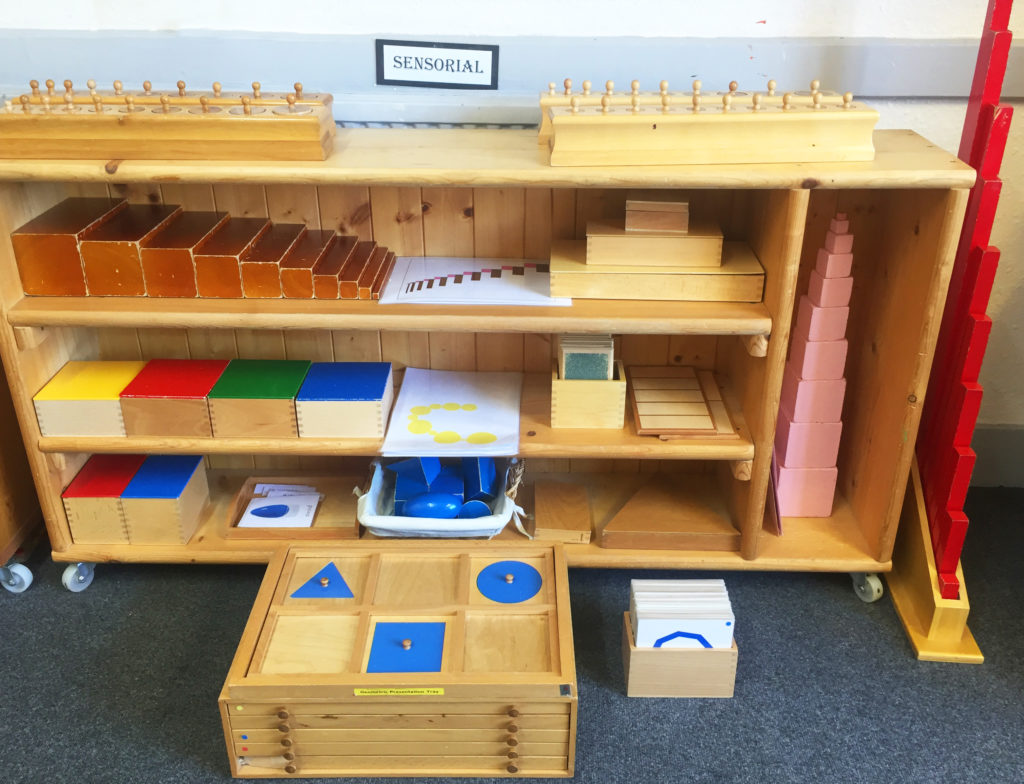
These attractive materials are specially designed to heighten the child’s awareness of the world around, by broadening and refining each of their sense. They help prepare the child for many later Montessori activities, especially the Maths and Cultural work.
Examples: pink tower, red rods, cylinder blocks, sound cylinders, rough and smooth boards, tasting drops, colour tablets, baric tablets.
Language Activities
Early language experience is gained through books, storytelling, poems, and songs with props. When interested in letters and reading, the child is introduced to Montessori language materials. First the sounds and shapes of the letters are taught a few at a time in individual lessons. Then reading and writing are introduced through various structured activities.
Examples: Sandpaper letters (used to learn letter sounds and shapes), moveable alphabet (cut-outs letters that the child can use to write words phonetically), object boxes (toy-sized things with three-letter names that the child can read phonetically), and reading folders (packed showing alternative spellings of common word sounds).
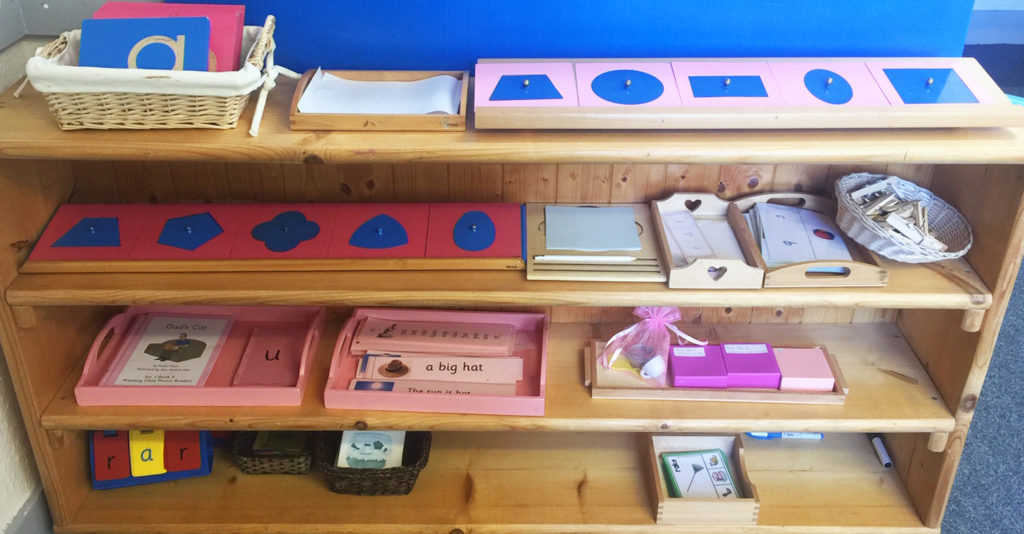
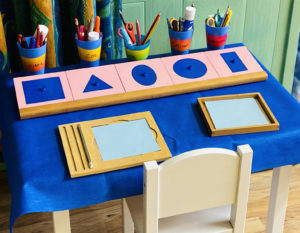
Maths Activities
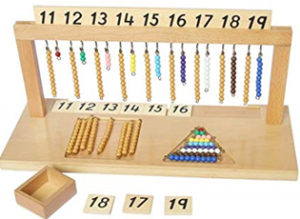

Early number experience includes counting, sorting, weighing, matching, and pairing – particularly in the Sensorial activities. When ready and interested in numbers, the child is introduced to a variety of maths activities, progressing from the simple to the complex and from the concrete to the abstract. Arithmetic, for example, is learned through the use of beads that come as ones, tens, hundreds, and thousands.
Examples: number rods, sandpaper numbers, numbers and counters, spindle box, addition/subtraction beads, fraction circles.
Cultural Activities
These activities are usually conducted as group work, to promote social interaction. They cover all aspects of learning that makes a culture rich and interesting. Each term, special projects are run in nature, science and history, including ongoing cultural work.
For art, an easel is always up in the classroom so the children can paint when they like, and there is a daily art/craft lesson such as painting, sticking, printing, modelling, collage, and sculpting.
For dance, the children are encouraged to join in with movement to music which promotes body awareness gross and fine motor control, rhythm, balance, and co-ordination. During music, the children are introduced to songs, rhythms, and different instruments).
YogaSori is a new method combining Montessori and Yoga taught by a specially trained teacher for children to build confidence and self esteem, improving balance, senses and memory skills.
French is, taught by a professional French teacher, with an emphasis on fun and games using the language.
